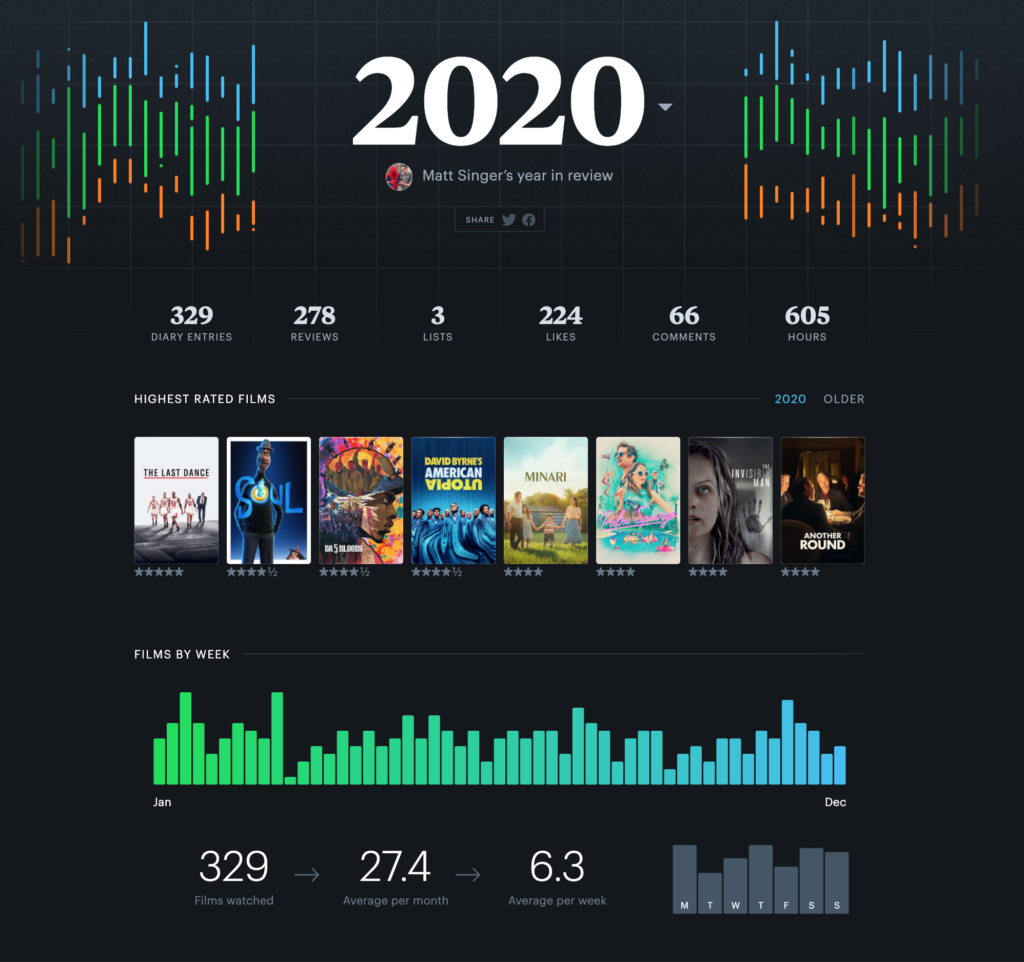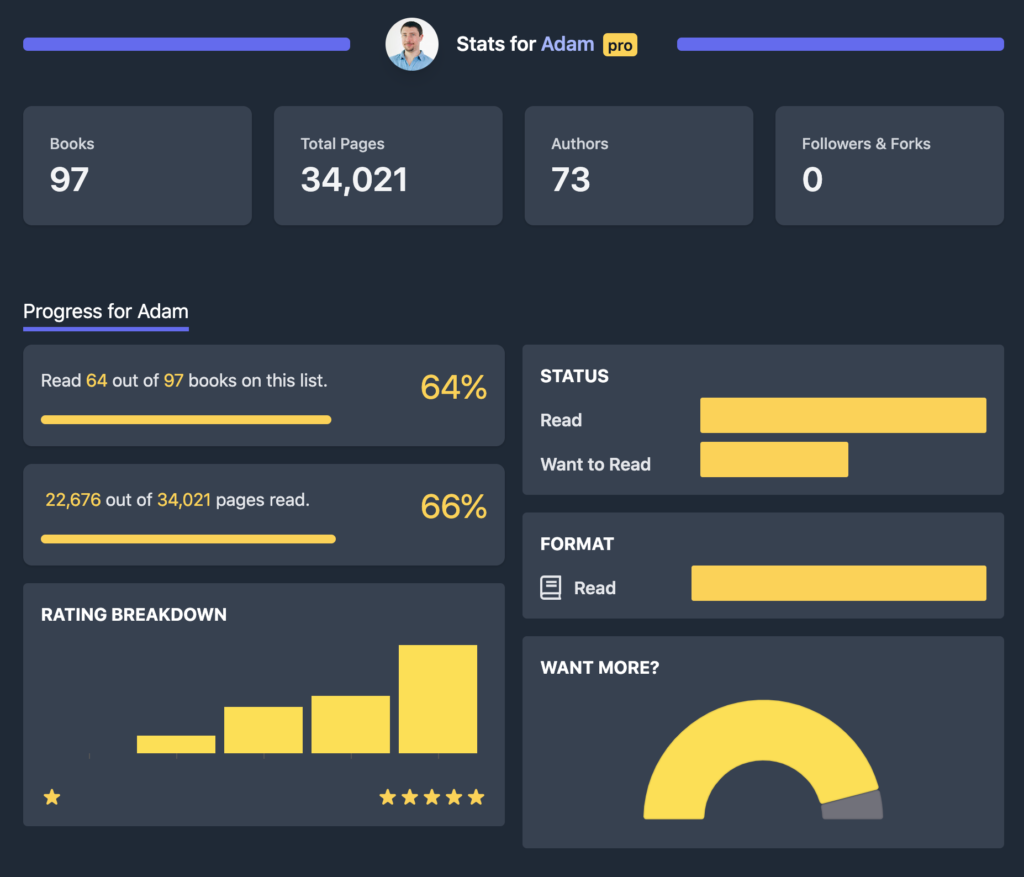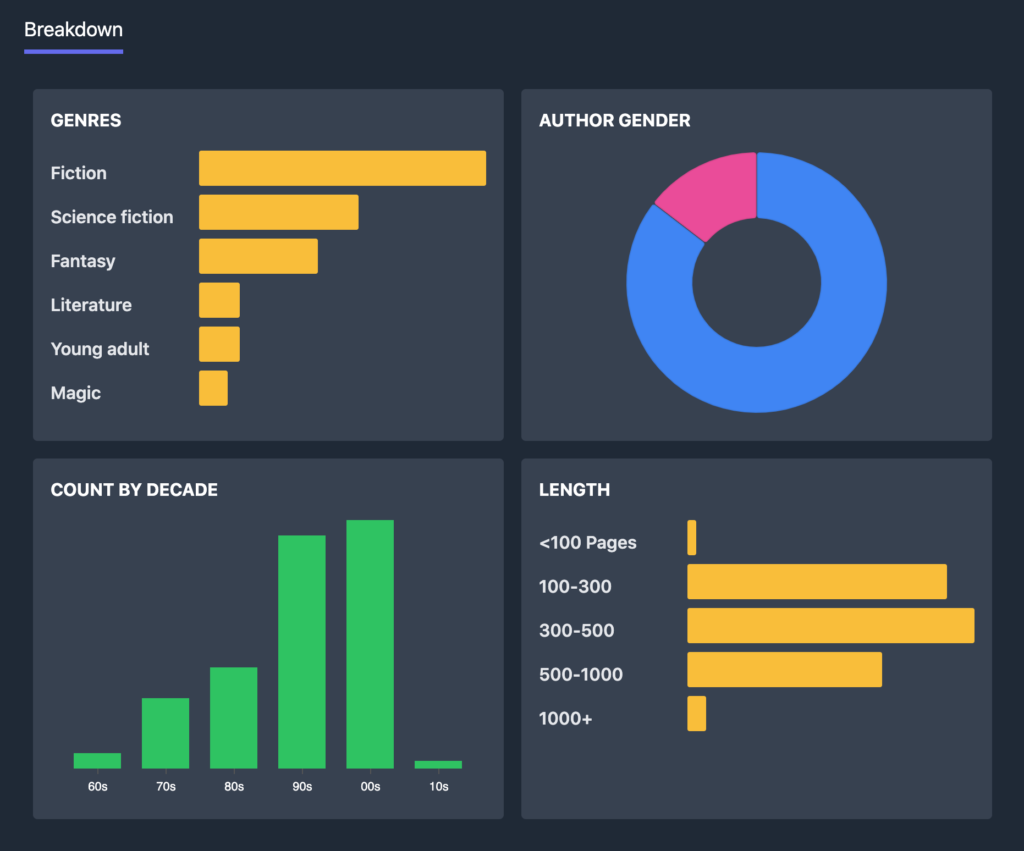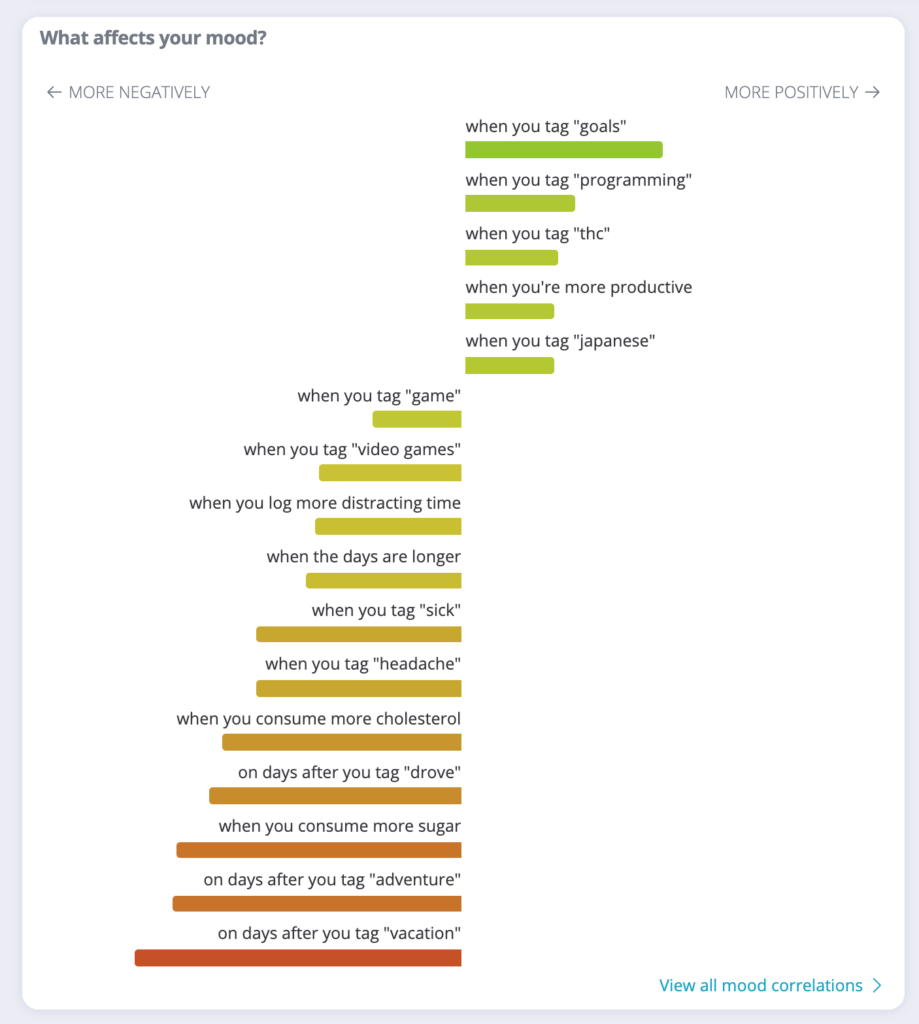Your Book Stats: What Are They For?
By Adam Fortuna
Something we’ve been brainstorming more about lately is book stats. This is different than information about a specific book – this is rolling up details about a bunch of books and presenting that data in a way that makes sense.
This is a common practice on just about every service you probably use. Many services don’t do this because knowing your stats might cause you to reflect and realize just how much time you’re spending browsing Reddit or watching The Bachelor on Hulu.
For books though, seeing your stats can be motivational! It can remind you of favorites and cause you to read more… if done right.
How we group these books and what data we show is where is gets tricky. There are almost as many “book groupings” as book stats.
- Every book you’ve ever read
- Books you read in a specific time period – like “2021 books read”
- Books on a specific list
- Books with a specific status (Want to Read, Read, Did not Finish, etc)
- Manual lists
- Lists created by other people
- All of the books on Hardcover based on usage
- Books by a specific author
- What people have read in the past year for an author
- Books in a genre
- New or popular books
And so many more. For now we’re starting on a few specific pages: list stats, user stats and yearly stats.
But what’s important about stats? Why is this worth focusing on?
A Celebration
At the beginning of every year I see a bunch of Tweets that look like this:
January is the month for people to share a celebration of their past years music, books and more. Spotify Wrapped has taken the lead on the music front here, giving people insight into their last year in a much more satisfying way than simply sorting by play count.
Side note: now that Bo Burnham’s Inside is on Spotify, my 2021 Year In Review is going to way more than depressing than usual too.
Many other platforms have taken on the same thing. Nintendo recaps your most played games and your total hours played.
Strava, a fitness tracking app, digs into your active days, most active times, total distance, average pace and achievements.
Duolingo, the language learning app, celebrates your effort over the last year. Spending an hour a week on any self-improvement is reason enough to look back in awe.
Even Doordash has gotten into the yearly review space – although I don’t think this has the impact they were hoping for.
My favorite celebration of the past year of them all is Letterboxd, a site for film buffs to track what they watch and discover hidden gems (sound familiar)?

This is just the above the fold part of the stats page. Pro users will have a more elaborate review that breaks down favorite films by genre, country, favorite stars, directors, and a bunch more.
These stats help understand where your taste in movies lie. You may think you love one genre, only to notice you’ve barely watched any movies in it.
Letterboxd also doesn’t wait until the end of the year to show you your stats. You can view them at anytime for the year up until today.
In a lot of ways, I see Letterboxd’d (say that 3 times fast) relationship to IMDB as similar to Hardcovers relationship to Goodreads. Letterboxd didn’t try to be a complete replacement for IMDB. They aimed at being a place for movie lovers to go to be around other serious film buffs and people that love movies. We’re aiming to do the same thing with Hardcover.
All of of these stats pages have one thing in common: They’re specific to a single user and over a time frame.
As far as year in review pages go, Goodreads actually does a decent job here. My 2020 year in review page goes into a few high level stats – books read, pages read and a few more.
After talking to potential Hardcover users, readers like this, but want a lot more. We have more work to do on this, but we’ve already heard a few more things that readers want to see:
- Author gender – A breakdown of the gender of the authors a user has read over the past year. This one has come up a lot. This is something that helps readers understand if they’re unconsciously (or consciously) picking books from a wide number viewpoints or not.
- Author race – Like gender, it’s easy to fall into a loop of reading authors you love and then reading similar authors to those. That can be fun, but it can be difficult to break out from that space into voices that are drastically different. Add to this recommendation algorithms that favor similar books and it’s less likely you’ll be exposed to drastically different points of view.
- Book age – Some way to see what time period you’re reading books from. Are you focusing on recent books? Books from the last century? Classics from 100+ years ago?
- Ratings breakdown – A grouping of your ratings on any number of dimensions. This could be as simple as a bar chart of your ratings, or an advanced look at your ratings comparing two groups. Do you rate new books higher? How about books in a specific genre? Just knowing that can help you (and us) pick future books that you’ll love.
- Reading format – Whether you read the book, listened to it or both. We’re building different reading formats into the DNA to support audiobook listeners as well as traditional readers.
- Book type – Novel, short story, graphic novel, comic book – there are many types of books out there. This plays into goals as well. If you’ve set a goal of reading 52 books in a year, do you want to count 30 page comics? Maybe. Maybe not.
We’re still figuring this out, but we’re excited by what it could enable: for you to find more books you love and expand your horizons. We’re starting with list stats – something that would show for any list you create. Many of these same stats could make their way to a “year in review” page later on.

Any breakdown of a users activity has two big dimensions of data: user data and book data. The above prototype focuses mostly on user data. It’s a quick look at the progress towards a list, how they got there (read? listened?) and what they thought of those books.
Book data on the other hand doesn’t change per user. This is data grouped by the books themselves. If two people created the same list this data would be the same.

Where things get really interesting is when you start combining both of these datasets. What genres do you rate the highest? Do you want more books by men or women? Are the unread books on this list longer or shorter?
There’s a word for this – insights. It goes beyond just showing data to showing practical takeaways based on behavior. Pulling insights out of your book data is a dream of mine – even if I don’t yet know what that looks like.
Exist.io, a mood tracking app that I use, does a good job of this by correlating some data. It’s a good start, but there’s a lot more we can do with book data.

It completely makes sense that the days that I give the lowest mood score for are after a vacation or an adventure. That’s neat data to see, but I can’t see it’s going to help change in any way. Seeing the relationship between consuming sugar and cholesterol is something I can take immediate action on to be happier.
I’d love to figure out how to do something similar for books. We could correlate on similar dimension with your ratings, but with various other book criteria on the second dimension. Maybe you actually love books set in a particular location or time period and you don’t even realize it?
There are a bunch of questions you could ask, and our hope is to give you the tools to be able to answer most of them on your own.